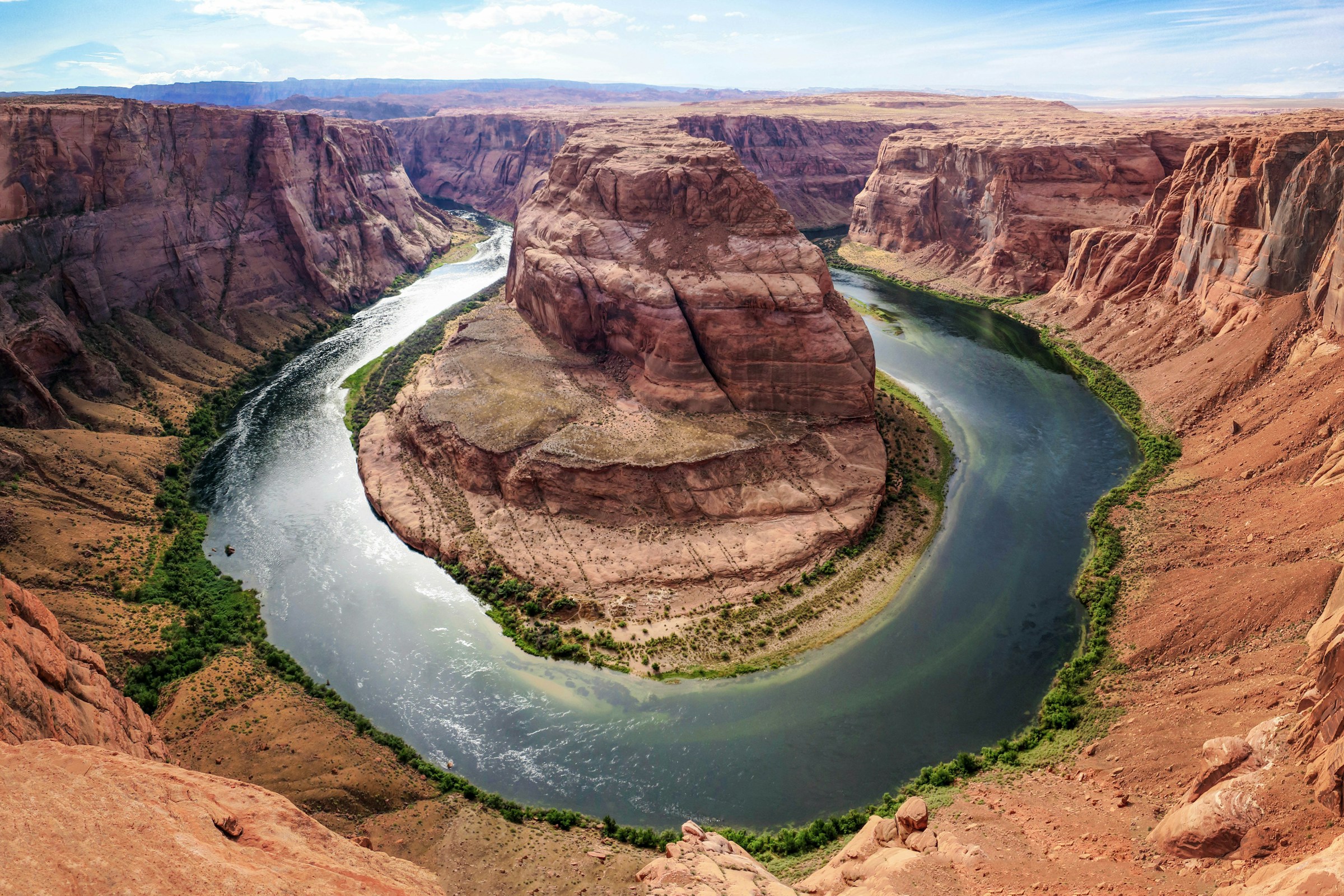
Researchers Urge Closing Outdated Water Rule to Aid Colorado River Crisis
By McGregor McCance
Researchers investigating the historic stresses of the American West’s water supply have identified a simple solution that could put parts of the Colorado River Basin on a more sustainable path.
In a new paper published today, a consortium of scientists and water experts including University of Virginia Darden School of Business Professor Peter Debaere recommend that closing Colorado’s “free river conditions” loophole would serve as a key initial step to reducing water stress in the region.
“Closing this loophole in Colorado’s water rights system could save millions of cubic meters of water and be the state’s modest contribution to solving water stress in the Colorado River Basin,” said Debaere, an expert in the economics of water and water markets.
In Colorado, when the river carries enough water to meet everyone’s needs, the “free river condition” allows anyone — regardless of whether they own water rights — to take as much water as they want from the river.
The new paper, “Closing Loopholes in Water Rights Systems to Save Water: The Colorado River Basin,” appears in the journal “Water Resources Research,” published by AGU, a global organization dedicated to Earth and space sciences. Debaere is part of a consortium that includes researchers from the UVA School of Engineering and Applied Science and other scientific and academic partners.
The 1,450-mile Colorado River is a lifeline for the American West. It quenches the thirst of 40 million people across seven states, more than 25 Native American tribes and parts of Mexico. It also irrigates some of the country’s most productive farmland and generates hydropower used across the region. The seven states using Colorado River water are divided into two groups: Upper Basin (Colorado, Wyoming, Utah, New Mexico) and Lower Basin (Arizona, Nevada, California).
But this vital resource is under threat: the amount of water flowing into the Colorado has been shrinking as rising temperatures have increased evaporation and reduced the snowpack that feeds the river. At the same time, demand from farms and cities has been rising.
That increasing stress on limited resources further highlights the problems associated with Colorado’s free river loophole.
Describing free river conditions as “an antiquated relic from when water was relatively abundant,” the paper suggests that the approach perpetuates the imbalanced supply and demand. That raises the likelihood that Lower Basin water users exercise a “compact call,” essentially charging that the Upper Basin is not ensuring the legally required amount of water. Such a maneuver could result in additional caps or restrictions on water use in the Upper Basin.
“Colorado can help avert this by closing its free river loophole,” the paper states.
The current challenges came to a head in mid-2022, when water levels in Lake Powell and Lake Mead, the two major reservoirs on the Colorado River, dropped so low that they threatened the intake of water for hydropower. The situation was dire enough for the Biden administration to step in.
Further progress proved difficult, however. California, Arizona and Nevada only agreed to major water cuts in exchange for federal funding. Fortunately, an unusually wet winter in 2022-2023 plus conservation efforts have eased the immediate crisis.
Government officials said Lake Powell and Lake Mead were still only at 37% capacity as of Aug. 15. In 2000, they were nearly full.
Within each state in the Upper and Lower Basins, water users like farms or cities have their own rights to a fixed amount of water, with earlier users having stronger claims.
During shortages, users with older water rights have priority. They receive their allocation first and can claim water from users with newer rights, who consequently receive reduced amounts or no water at all.
This long-standing system is increasingly under strain due to climate change. The strain is exacerbated by two factors: first, the river has been overallocated since the first Colorado River Compact was signed; and second, there is no explicit agreed-upon cap on water usage, Moreover, the system lacks a cap that could adjust to changing water availability.
The seven states are currently negotiating how to share the shrinking supply, as some current guidelines for how the basin will share water expire at the end of 2025.
“Finding a compromise among the seven states will be difficult but closing the free river condition could be a way in which Colorado might contribute to the process,” Debaere said.
During free river conditions in 2017 —and in spite of downstream water challenges and lowering reservoir levels, for example — water users diverted an estimated 108 million cubic meters more than their water rights allowed, according to the new paper. That’s water that could have been stored in Lake Powell.
Debaere said that while the annual excess water taken during free river conditions is significant but not exorbitant, closing this loophole is crucial for other reasons.
It would better define water rights and prevent withdrawals beyond legal limits. This is important for future reforms, such as capping overall water use or introducing programs to leave fields fallow. These efforts won’t work if unlimited water access is occasionally allowed.
Closing this loophole could also be Colorado’s contribution to easing water stress in the Colorado River Basin, especially as the seven basin states struggle to agree on reducing overall water use.
“Abolishing the free river condition will not only reduce water use but also prepare the water rights system for future reforms,” Debaere said.
In addition to Debaere, co-authors of the new paper represent organizations including: International Business School Suzhou, Xi’an Jiaotong-Liverpool University, Suzhou, China; B3 Insight, Denver; Department of Civil and Environmental Engineering, University of Wisconsin-Madison; Department of Civil, Construction and Environmental Engineering, University of Alabama; Department of Civil and Environmental Engineering, and Department of Systems and Information Engineering, University of Virginia; Sustainable Waters, Crozet, Va.
The University of Virginia Darden School of Business prepares responsible global leaders through unparalleled transformational learning experiences. Darden’s graduate degree programs (MBA, MSBA and Ph.D.) and Executive Education & Lifelong Learning programs offered by the Darden School Foundation set the stage for a lifetime of career advancement and impact. Darden’s top-ranked faculty, renowned for teaching excellence, inspires and shapes modern business leadership worldwide through research, thought leadership and business publishing. Darden has Grounds in Charlottesville, Virginia, and the Washington, D.C., area and a global community that includes 18,000 alumni in 90 countries. Darden was established in 1955 at the University of Virginia, a top public university founded by Thomas Jefferson in 1819 in Charlottesville, Virginia.
Press Contact
Molly Mitchell
Senior Associate Director, Editorial and Media Relations
Darden School of Business
University of Virginia
MitchellM@darden.virginia.edu




